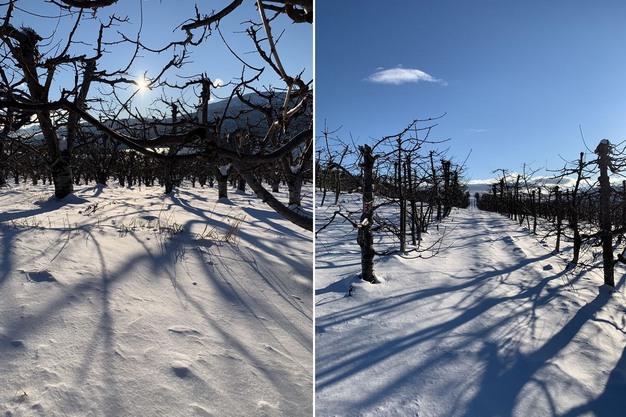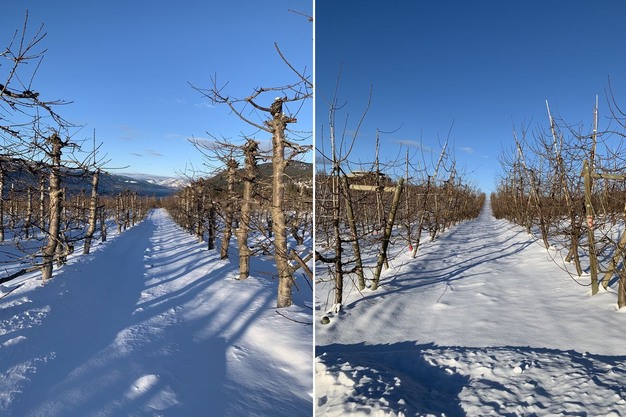It's beautiful winter weather in the Okanagan Valley of British Columbia (B.C.), Canada. The highly fertile region that is surrounded by mountains and lakes offers the perfect conditions to grow cherries. As a result, the region grows the largest majority of cherries in B.C. While winter creates a stunning landscape, cherry growers have experienced the downside of cold weather firsthand.

Hardiness checks
Last year, a January freeze event resulted in a very short crop and volume was about 10 to 20 percent of an average crop. Just this past week, the region witnessed very cold weather again (-13°C through – 17°C), but it looks like the orchards came through the weather.
"We are pleased that the cherry buds are still in full dormancy, with freeze chamber testing indicating bud hardiness to -21°C and colder," says Julie McLachlan with Jealous Fruits. "The forecast is for continuing moderately cold temperatures for the balance of February, which ought to maintain this dormancy." Dormancy is key because it protects the buds against cold weather. As soon as the weather warms up, fruit buds start to wake up and they become very vulnerable. Last year, the buds had already started to wake up when temperatures plummeted to extremely lows between -25°C and -28°C.
In addition to hardiness checks, the Jealous Fruits' Horticulture team has begun analysis of fruit bud and primordia numbers. "These results are showing the potential for a very strong 2025 crop at all farms and all elevations," McLachlan shared.

 For more information:
For more information:
Julie McLachlan
Jealous Fruits
Tel: +1 (250) 766-0738 ext. 204
julie@jealousfruits.com
www.jealousfruits.com
